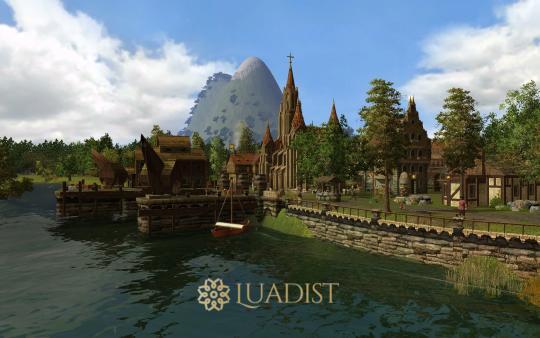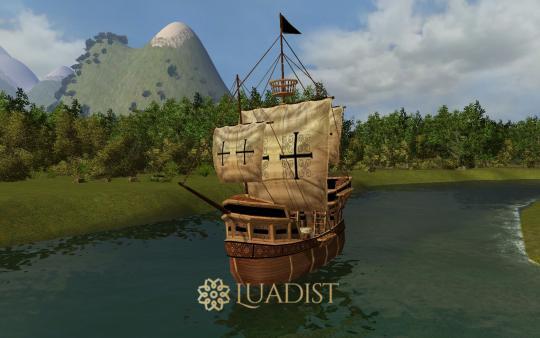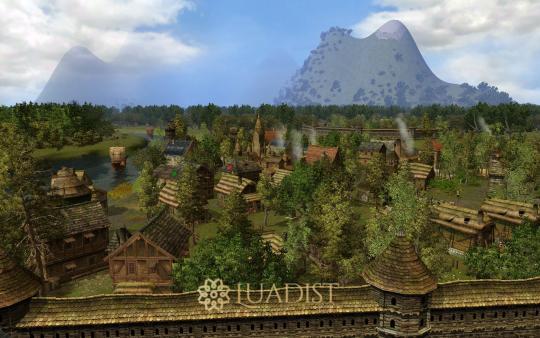| Title | The Guild II Renaissance |
| Developer(s) | Runeforge Game Studio |
| Publisher(s) | THQ Nordic |
| Genre | PC > Strategy, Simulation |
| Release Date | Jul 28, 2010 |
| Size | 1.94 GB |
| Get it on | Steam Games |
| Report | Report Game |

The Guild II Renaissance is a medieval life simulation game developed by JoWood Entertainment and released in 2010 for PC. It is the fourth installment in The Guild series and is set during the Renaissance era in Europe.
“In The Guild II Renaissance, players can take control of their own dynasty, from humble beginnings to becoming a powerful and influential family in the society.”
The game offers a unique blend of strategy, economy, and role-playing elements, making it an immersive experience for players. It received positive reviews for its in-depth gameplay and historical accuracy.

Gameplay
The Guild II Renaissance allows players to choose between four characters: trader, craftsman, scholar, or rogue. Each character has their own unique abilities and skill sets. Players can also customize their appearance and name.
Players start off with a small amount of money and have to build their own business. They can choose to establish a trading empire, run a successful craft workshop, or become a powerful political figure. The game offers a wide range of options, and players are free to pursue their own path to success.
In addition to managing their business, players also have to take care of their personal needs and those of their family. This includes getting married, having children, and ensuring their health and happiness. As players progress in the game, they can upgrade their properties, hire employees, and expand their influence in the society.

Economy and Politics
The Guild II Renaissance has a complex economy system where players have to manage their resources wisely. They can buy and sell goods, negotiate deals, and even manipulate the market by creating monopolies. The game also includes a variety of events and random occurrences that can affect the economy, making it more challenging and realistic.
As players become more successful, they can also participate in political activities. This includes running for office, building alliances, and even commit political assassinations. The political system in the game is dynamic and highly competitive, making it a crucial aspect of the gameplay.

Multiplayer
In addition to the single-player mode, The Guild II Renaissance also has a multiplayer mode where players can compete against each other. They can form alliances, engage in business wars, and even sabotage each other’s progress. The multiplayer mode adds an extra layer of excitement and unpredictability to the game.
Conclusion
The Guild II Renaissance is a highly immersive and addictive game that offers players a chance to experience life during the Renaissance era. Its combination of strategy, economy, and political elements make it a unique and challenging experience for players. With its detailed graphics, historical accuracy, and complex gameplay, The Guild II Renaissance is a must-try for any fan of medieval life simulation games.
System Requirements
Minimum:- OS: Windows® XP, Vista, 7, 10
- Processor: 2 GHz Processor
- Memory: 512 MB RAM
- Graphics: DirectX 9 capable graphics adapter with Pixelshader Model 1.1
- DirectX: Version 9.0c
- Storage: 4 GB available space
- Sound Card: DirectX 9.0 compatible sound card
- OS: Windows® XP, Vista, 7, 10
- Processor: 2.8 GHz Processor or better
- Memory: 1 GB RAM
- Graphics: DirectX 9 capable graphics adapter with Pixelshader Model 2
- DirectX: Version 9.0c
- Storage: 4 GB available space
- Sound Card: DirectX 9.0 compatible sound card
How to Download
- Click the "Download The Guild II Renaissance" button above.
- Wait 20 seconds, then click the "Free Download" button. (For faster downloads, consider using a downloader like IDM or another fast Downloader.)
- Right-click the downloaded zip file and select "Extract to The Guild II Renaissance folder". Ensure you have WinRAR or 7-Zip installed.
- Open the extracted folder and run the game as an administrator.
Note: If you encounter missing DLL errors, check the Redist or _CommonRedist folder inside the extracted files and install any required programs.